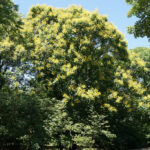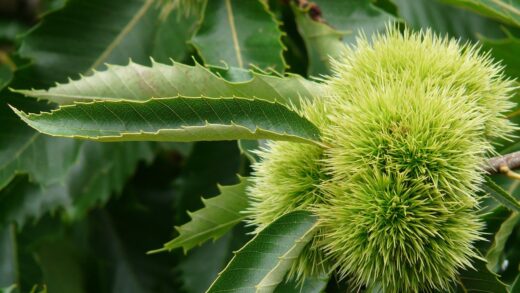The successful cultivation of beans is deeply intertwined with providing a balanced and timely supply of essential nutrients. While beans possess the unique ability to fix their own nitrogen, they still rely on the soil for a host of other minerals crucial for healthy growth, flowering, and pod production. Understanding the specific nutrient requirements of the bean plant, from macronutrients like phosphorus and potassium to vital micronutrients, is key to developing an effective fertilization strategy. A well-nourished plant is not only more productive but also more resilient to pests and diseases, making proper nutrient management a cornerstone of a thriving garden and a bountiful harvest.
Beans, like all plants, require a range of nutrients for healthy development, which are typically divided into macronutrients and micronutrients. The primary macronutrients are nitrogen (N), phosphorus (P), and potassium (K). Nitrogen is essential for leafy, vegetative growth. Phosphorus plays a critical role in energy transfer, root development, and flowering. Potassium is vital for overall plant vigor, water regulation, and disease resistance, as well as the development of quality pods and seeds. While beans need all three, their nitrogen requirement from the soil is unique compared to many other vegetables.
The most distinctive nutritional characteristic of beans is their symbiotic relationship with Rhizobium bacteria. These bacteria colonize the roots of legumes, forming small nodules where they perform the remarkable process of nitrogen fixation. They convert atmospheric nitrogen gas, which is unusable by plants, into ammonia, a form of nitrogen that the bean plant can readily absorb and utilize. This natural process means that beans can generate a significant portion of their own nitrogen supply, reducing the need for heavy nitrogen fertilization. In fact, applying excessive nitrogen fertilizer can be counterproductive, as it may inhibit the development of the nitrogen-fixing nodules and promote excessive foliage growth at the expense of flower and pod production.
Despite their nitrogen-fixing capabilities, beans still require an adequate supply of phosphorus and potassium from the soil. A soil test is the most accurate way to determine the existing levels of these nutrients and the soil’s pH, which affects nutrient availability. Before planting, the soil can be amended based on the test results. If the soil is deficient, a balanced fertilizer with lower nitrogen and higher phosphorus and potassium content, such as a 5-10-10 formula, is often recommended. Incorporating well-rotted compost or manure into the soil before planting also provides a slow-release source of these essential nutrients.
Micronutrients, including calcium, magnesium, sulfur, iron, manganese, and zinc, are required in much smaller quantities but are no less important for plant health. These elements are involved in various enzymatic and metabolic processes. For example, calcium is crucial for cell wall structure, and magnesium is a central component of the chlorophyll molecule. A healthy soil rich in organic matter will typically contain sufficient levels of these micronutrients. Deficiencies are more likely to occur in sandy soils or soils with an imbalanced pH, which is another reason why starting with a soil test is so beneficial for creating a targeted and effective fertilization plan.
More articles on this topic
The role of nitrogen fixation
The process of nitrogen fixation is a remarkable example of a symbiotic relationship in nature and is central to the nutrient management of beans. This process is carried out by soil bacteria of the genus Rhizobium. These bacteria are attracted to the roots of legume plants, which secrete chemical signals into the soil. In response, the bacteria invade the root hairs and stimulate the plant to form nodular structures on its roots. Within the protected environment of these nodules, the bacteria are supplied with carbohydrates from the plant through photosynthesis.
In return for this energy supply, the Rhizobium bacteria perform the vital service of converting atmospheric nitrogen (N2) into ammonia (NH3). This conversion is a complex biochemical process that plants cannot perform on their own. The ammonia is then assimilated by the bean plant and used to build amino acids, proteins, chlorophyll, and other essential organic molecules. This self-sustaining nitrogen source gives legumes a significant competitive advantage, particularly in soils that are low in nitrogen. It also means that beans can actually improve the fertility of the soil they grow in.
The efficiency of nitrogen fixation can be enhanced by introducing a high concentration of the correct strain of Rhizobium bacteria to the soil at the time of planting. This is done through the use of a commercial inoculant, which is a powder containing dormant bacteria. The bean seeds are lightly moistened and then mixed with the powder, coating them before they are sown. This practice is especially recommended when planting beans in a garden plot for the first time or in soil where legumes have not been grown for several years, as the native population of the appropriate bacteria may be low.
At the end of the growing season, the nitrogen-rich legacy of the bean plants can be passed on to the soil. Instead of pulling the entire plant out of the ground after the final harvest, it is beneficial to cut the plants off at the soil line, leaving the roots and their nitrogen-filled nodules to decompose in place. This releases the fixed nitrogen back into the soil, enriching it for the next crop that will be planted in that location. This makes beans an excellent component of crop rotation plans, as they naturally fertilize the soil for subsequent heavy-feeding plants like corn or leafy greens.
Organic vs. synthetic fertilizers
When it comes to providing supplementary nutrients to bean plants, growers have the choice between organic and synthetic fertilizers. Organic fertilizers are derived from natural materials, such as compost, aged manure, bone meal, blood meal, and fish emulsion. These materials not only supply nutrients but also contribute to the overall health of the soil. They improve soil structure, enhance water retention, and feed the beneficial microorganisms that are part of a healthy soil ecosystem. The nutrients in organic fertilizers are typically released slowly as the organic matter is broken down by soil microbes, providing a steady, gentle supply of food to the plants over a longer period.
Compost is one of the most beneficial organic amendments for a bean patch. A generous application of well-finished compost, worked into the soil before planting, can often provide all the necessary phosphorus, potassium, and micronutrients for the entire season. Bone meal is a good organic source of phosphorus, which is crucial for root and flower development, while wood ash can provide potassium, although it should be used with caution as it can also raise the soil pH. These organic options work in harmony with the natural soil processes and support long-term soil fertility.
Synthetic fertilizers, on the other hand, are manufactured chemical compounds that provide a concentrated and readily available source of nutrients. They are formulated with specific N-P-K ratios, allowing for precise application to correct known deficiencies. Because the nutrients are in a water-soluble form, they are immediately available for plant uptake, which can result in a rapid growth response. This can be useful for quickly addressing a severe nutrient deficiency that is threatening the health of the crop.
However, the use of synthetic fertilizers comes with potential downsides. Their concentrated nature makes it easy to over-fertilize, which can burn plant roots and harm the plants. The readily available nitrogen in many synthetic formulas can inhibit the nitrogen-fixing process in bean root nodules. Furthermore, synthetic fertilizers do not contribute to improving soil structure or feeding the soil food web. Their long-term, repeated use can lead to a decline in soil health and organic matter, and the runoff of excess nutrients can contribute to the pollution of waterways. For these reasons, many gardeners prefer an organic approach that focuses on building healthy soil as the foundation for healthy plants.
Application schedules and methods
The timing and method of fertilizer application are just as important as the type of fertilizer used. For beans, the majority of nutrient supplementation should happen before the seeds are even planted. This is the ideal time to incorporate amendments based on a soil test. Well-rotted manure, compost, and any necessary phosphorus or potassium sources should be tilled or dug into the top 15-20 centimeters of the soil. This pre-plant fertilization ensures that a reservoir of slow-release nutrients is available to the plants as their root systems develop and expand.
Once the bean plants are actively growing, they generally have modest fertilization needs, thanks to their nitrogen-fixing ability. In most soils that were well-prepared with compost, additional fertilization may not be necessary at all. However, in poorer, sandy soils or in container-grown beans where nutrients can leach out more quickly, a supplemental feeding may be beneficial. If fertilization is needed during the growing season, it is best applied just as the plants are beginning to flower. This is when the plant’s energy and nutrient demands are highest as it shifts from vegetative growth to reproductive growth.
When applying fertilizer to established plants, a technique called side-dressing is often used. This involves spreading the fertilizer in a shallow trench or a band along the row, about 10-15 centimeters away from the base of the plants. This placement prevents the concentrated fertilizer from burning the stems or roots and encourages the roots to grow outwards. After the fertilizer is applied, it should be gently worked into the top layer of soil and then watered in thoroughly to help move the nutrients down into the root zone where they can be absorbed.
For a quick nutrient boost, especially if deficiency symptoms appear, a foliar feeding can be an effective short-term solution. This involves spraying a diluted liquid fertilizer, such as compost tea or a liquid kelp solution, directly onto the plant’s leaves. The leaves can absorb small amounts of nutrients directly through their surfaces, providing a rapid response. However, foliar feeding should be seen as a supplement to, not a replacement for, good soil fertility, as the plant’s primary route for nutrient uptake is through its roots. It should also be done in the early morning or on a cloudy day to avoid the risk of leaf burn.
Diagnosing nutrient deficiencies
Although beans are relatively self-sufficient, they can occasionally exhibit symptoms of nutrient deficiencies, especially if the soil is poor or the pH is imbalanced. Being able to recognize these visual cues can help a gardener diagnose the problem and take corrective action. A nitrogen deficiency, while less common in beans, would manifest as a general yellowing (chlorosis) of the entire plant, starting with the older, lower leaves. The plant’s growth would also be stunted. This is because nitrogen is a mobile nutrient, meaning the plant can move it from older tissues to support new growth.
A phosphorus deficiency often presents with less obvious symptoms. The plant may be stunted and have a dark, bluish-green color. In some cases, especially in young plants exposed to cold soil, the leaves may develop a purplish tint. Phosphorus is essential for energy transfer, and a deficiency can delay flowering and maturity. A deficiency in phosphorus can be difficult to correct mid-season, which is why pre-plant soil testing and amendment are so important.
A potassium deficiency typically appears as yellowing along the margins, or edges, of the older, lower leaves, while the center of the leaf remains green. As the deficiency progresses, these edges may turn brown and die, appearing scorched or burnt. Potassium is crucial for water regulation and overall plant health, and a deficiency can make the plant more susceptible to drought stress and diseases. A soil test can confirm a potassium shortage, which can be corrected with supplements like sulfate of potash or greensand.
Deficiencies in micronutrients can also occur. For example, an iron deficiency, often induced by a high soil pH, appears as yellowing between the veins of the newest, youngest leaves (interveinal chlorosis). In contrast to a nitrogen deficiency, the older leaves remain green. A magnesium deficiency has a similar appearance but often starts on the lower, older leaves and may have a mottled or marbled pattern. Correctly diagnosing the specific deficiency is key, as adding the wrong nutrient will not solve the problem and could potentially make it worse. A soil test remains the most reliable tool for an accurate diagnosis.




















